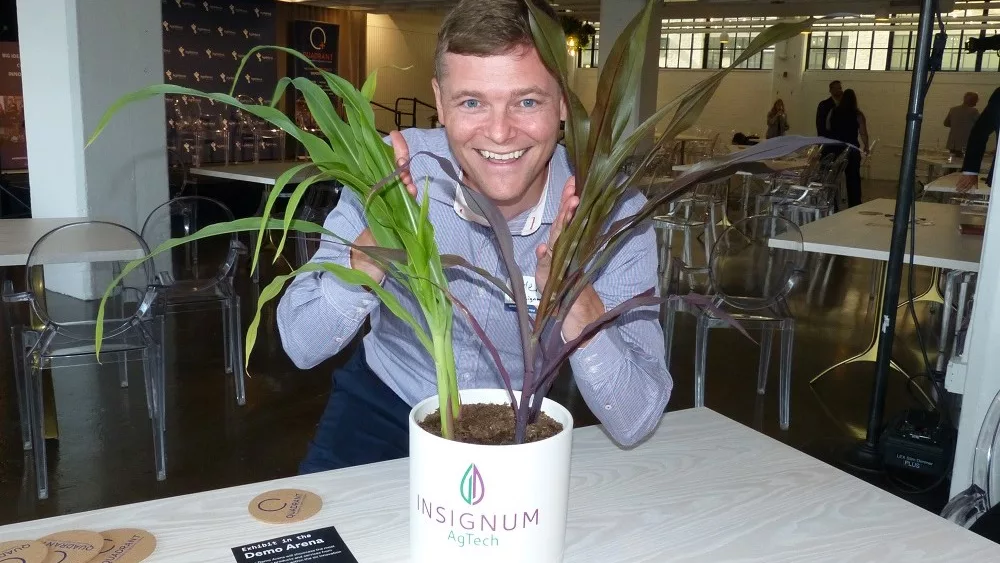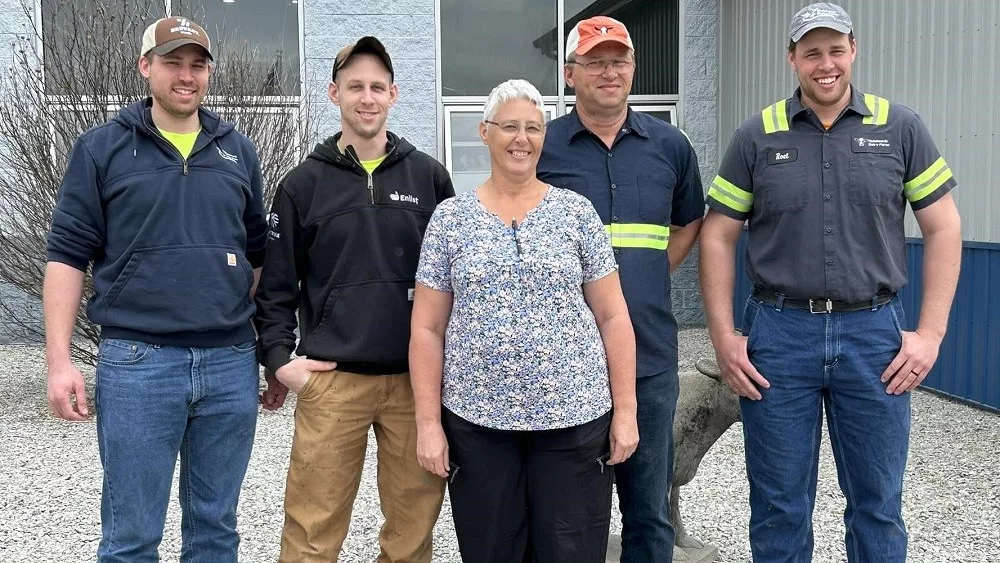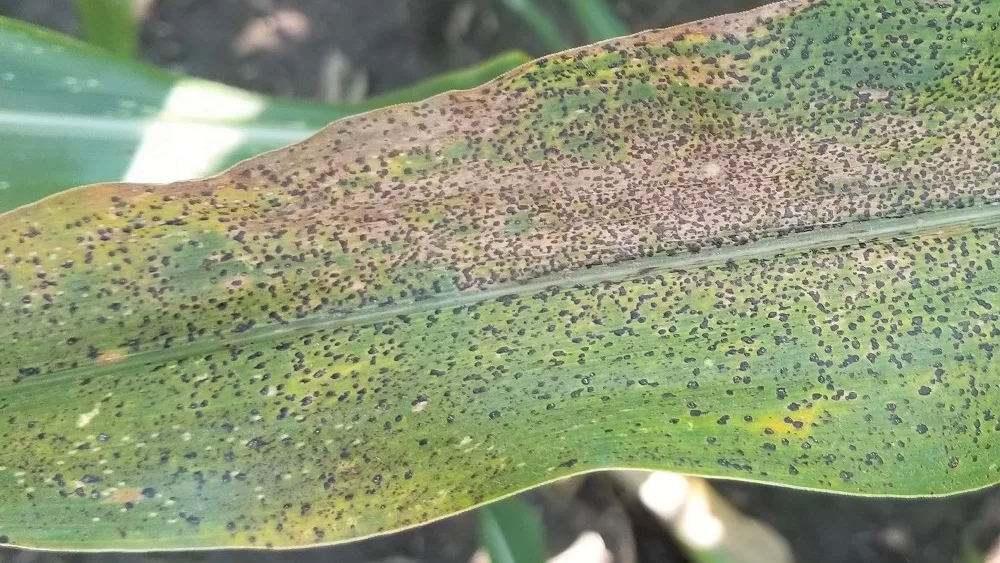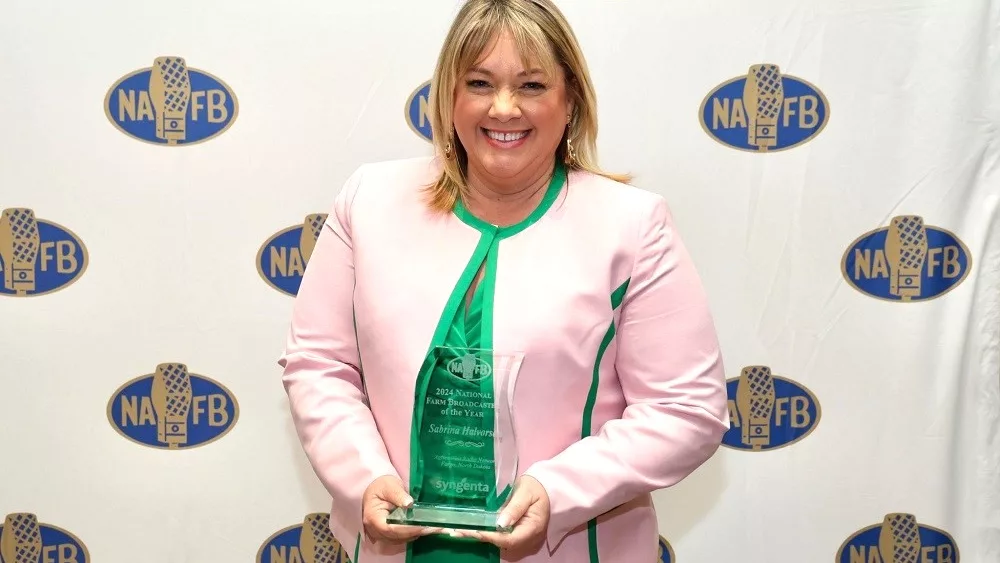
Imagine if your plants could turn purple to let you know they’re sick? That has already become a reality thanks to Insignum AgTech, which is based in Indiana. A new collaboration may soon help corn farmers identify the early stages of Tar Spot disease.
“We’re really excited to announce a collaboration with Purdue University to see how our plants specifically respond to Tar Spot,” says Kyle Mohler, the founder and CEO of Insignum Ag Tech.
Hoosier Ag Today spoke with Mohler during the QUADRANT event hosted by AgriNovus Indiana at VisionLoft Stutz in Indianapolis on July 17. Insignum Ag Tech was one of the ag startup companies featured during the event.
Mohler says he and his team are working with researchers from Purdue University to test out the new traits from his company that give early indications of Tar Spot in corn simply by the having the plant turn purple.
Tar spot disease lessens a corn plant’s ability to absorb sunlight, thereby weakening the plant and reducing yield. The disease is caused by the Phyllachora maydis fungus. It creates raised, bumpy black spots called stromata on corn husks, leaves and stalks. Each individual stroma can produce thousands of fungal spores that can quickly infect other plants and fields.
Insignum AgTech uses DNA already present in corn plants to develop a new gene that reveals infections at an early stage. The gene uses the plant’s innate response to a fungal spore to cause leaves to form purple spots at the site of infection about a week before disease symptoms can be identified.
“We’re working with a couple of professors in the College of Agriculture to gather more data on that and study this in a really controlled way,” says Mohler. “This collaboration with Purdue is also being supported by the Indiana Corn Marketing Council, so we’re really excited to have their support and the support of all the growers of Indiana.”
Among the Purdue professors involved in the collaboration with Mohler and Insignum Ag Tech are Christian Cruz, associate professor of botany and plant pathology, and Jian Jin, associate professor of agricultural and biological engineering.
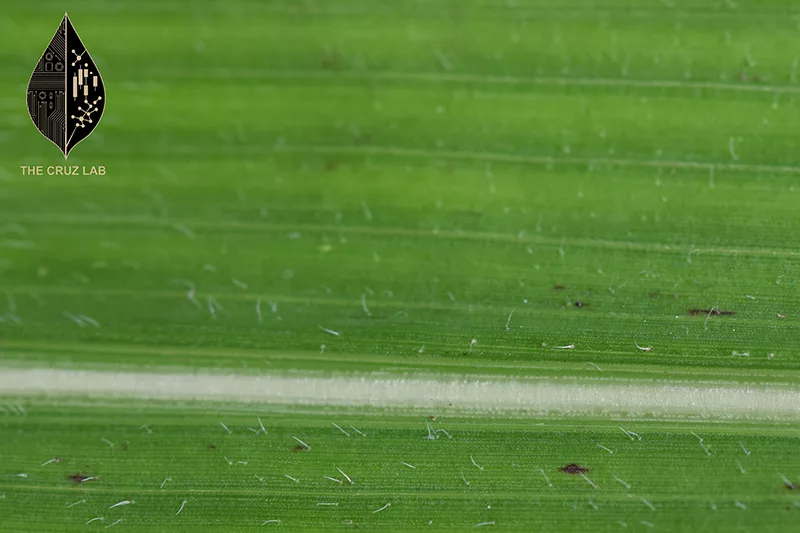
Mohler says the idea to develop the biotechnology that enables plants to use their pigments to warn growers about plant stresses has been on his mind for a very long time.
“The idea initially came because I grew up on a farm here in Central Indiana and my family farm started to use fungicides,” says Mohler. “I was curious why you would spray if you don’t know whether you have that problem or not? Then I learned that by the time you see the problem, it’s already too late because you have to be preventative in order to be effective at controlling for diseases. I understand that’s why you do things, but surely we can do better.”
He adds that his background in plant biochemistry led to this breakthrough development.
“I put a couple of pieces of background knowledge together about how plants react to diseases and how they make pigments,” he says. “We put these two things together to give plants the ability to tell us when they are sick so that we can get a jump start on exactly when that problem starts.”
“It’s a really simple and easy way to see that that problem is occurring, but even more so, it’s easy to pick up across thousands of acres so any color camera can see this color change and then that information could be fed back to the farmer,” says Mohler.
Read more about Insignum AgTech at InsignumAgTech.com.

